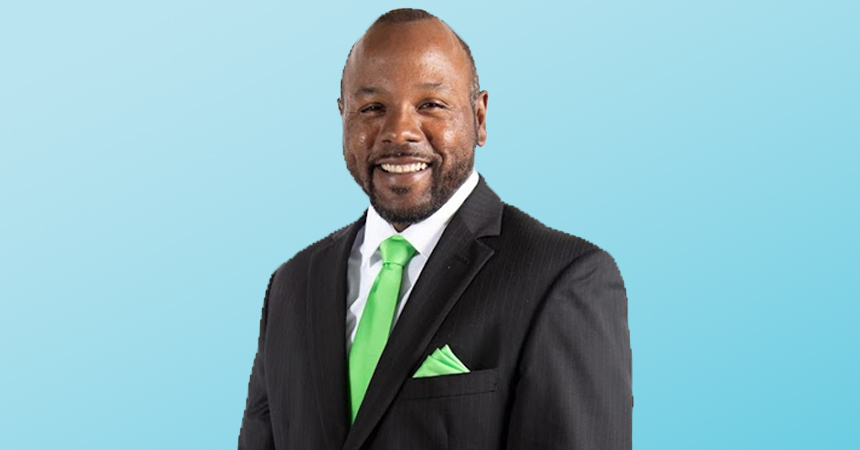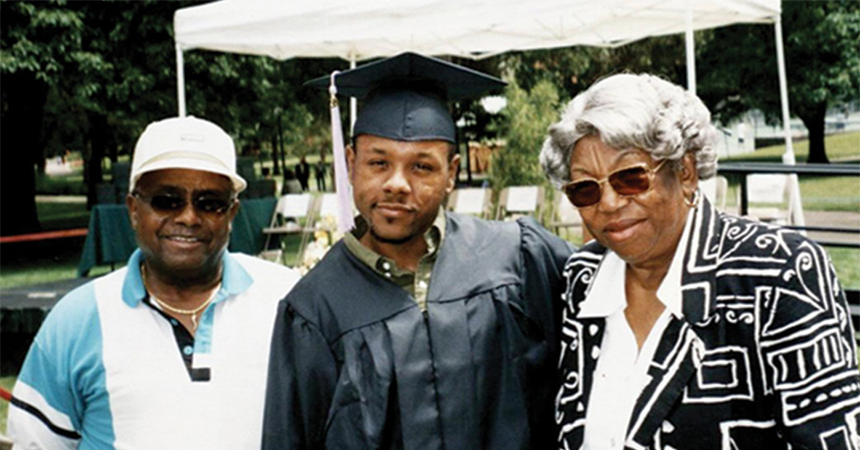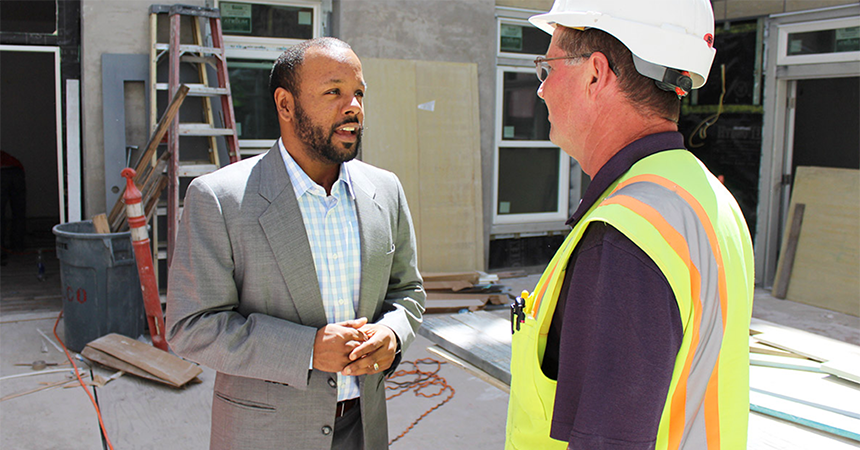
Since his career in architecture began, Nate McCoy has been working to ensure that people of color, business owners of color and contractors of color have equal access and opportunity to bid and work on public and private infrastructure projects. He started nearly 20 years ago on the policy side of housing and economic growth—first at the Portland Housing Bureau and later at Prosper Portland—applying an equity lens as a manager of projects and procurement, working to break down his agency’s barriers to economic success for communities of color. Since 2015, he has been President and CEO of NAMC-Oregon, the local chapter of the National Association of Minority Contractors. At NAMC-Oregon, Mr. McCoy uses his deep knowledge of the construction industry and leverages his relationships in the public and private sectors, to fight for real accountability, transparency and economic equality for people of color in the construction industry.
What drew you to architecture as a profession?
I’ve always had a passion for drawing and being a problem solver. When I was seven years old, drawing became a place of solace, space and sanity after my father died. I had a grade-school teacher who took notice of my drawing and told me I could be an architect. I liked the sound of that—designing buildings that would stand the test of time.
How did you decide to attend University of Oregon’s architecture program?
I applied to a lot of schools and was fortunate that Bill Hart, a Black architect in Portland, agreed to review my application. U of O had just rolled out a diversity in architecture scholarship, which I was awarded. It’s not a normal thing to get into architecture school as a freshman, usually, students aren’t accepted until at least their sophomore year.
Was there diversity in the student body when you were at U of O?
I was the only Black architecture student for four of my five years there. But there was a Reach for Success program that connected the college to high school students of color—a smart, proactive approach to attracting minority students. I was excited to be able to mentor younger kids in that program, knowing what it was like to feel like ‘the only one.’ No one treated me badly, but it still feels isolating not having peers that look like you.
After college, how did diversity, equity and inclusion influence your career focus?
Being on the public side as a Senior Construction Manager, I quickly saw how poorly represented people of color are in architecture, engineering and construction. Even today, we’re 3% percent of Oregon’s population, but less than 1% of us have jobs in these fields. I took it upon myself to build relationships with small businesses to make sure they can be part of the public goods and services projects that our taxes pay for.
But I had good experiences, too, as businesses started making some diversity commitments; I don’t want those to go unnoticed. I was at GBD Architects early in my career, and they started a basketball team because someone asked what my interests were. They noticed I wasn’t going on the peer skiing trips, so they asked what I’d like to do. They still have a team, and they’ve called me once in a while to join them.
Why do you think underrepresentation in architecture, engineering and construction persists?
If you can’t see it, you can’t be it. Large businesses, though highly visible, are often not representative of people of color whereas small businesses owned by people of color typically hire most of their employees from communities of color. You just don’t often see them working at a large scale or being seen to attract more people of color as they grow. Larger companies and colleges need to be more intentional with recruitment and use non-profits like NAMC to help in those efforts.
How is NAMC addressing the issue?
We have members who are business owners of color and partners who are developers and larger contractors. We want them to know and understand each other. I love the tough conversations that help me, and others grow. We can get straight to the root cause of issues and work through a lot of things. We bring people together every month, breaking bread, and building relationships across the state. There’s no time like now, with money coming to the state for transportation, affordable housing, and all kinds of projects.
We also mentor kids and young adults. We want to be there to support them before they self-select out of these jobs. We don’t want to lose the next generation of people of color in the trades. Their presence is important, and there are good living wage jobs to be had.
How is NAMC partnering with Energy Trust?
We’ve helped Energy Trust of Oregon partner with more contractors of color, and they are providing energy efficiency support that will help us secure a 50,000-square-foot building to stand up a business and workforce training program, which will root NAMC more firmly in helping people succeed in the trades. When we equip our members with tools for putting in bids, we are helping Energy Trust strengthen its relationships with these businesses. With transportation and electric vehicle infrastructure being a priority for the state, it’s a great time to be doing this work, as well as working with public sector and private developers to encourage them to use our members for Energy Trust projects.
What is your advice for people of color entering architecture, engineering or construction?
Stay confident, stay empowered and control your destiny. But don’t be afraid to be vulnerable with people who can help you. Don’t forget that there are people and organizations that want to help—and they can only help if you speak up. Come one and come all—we want to know you and support you.


